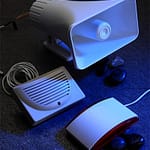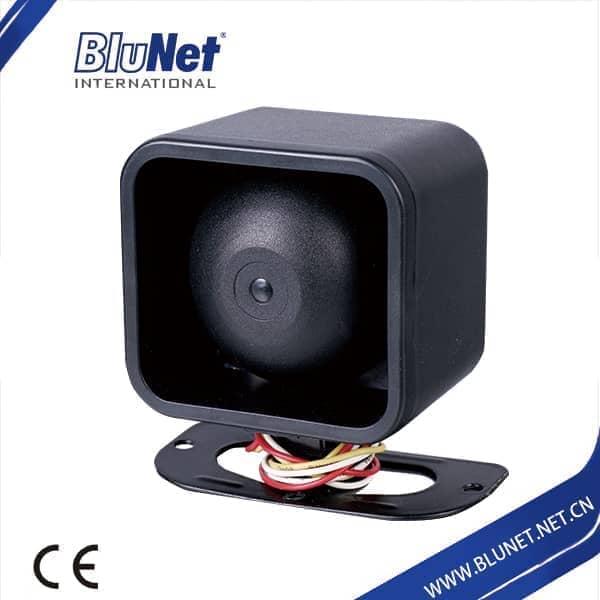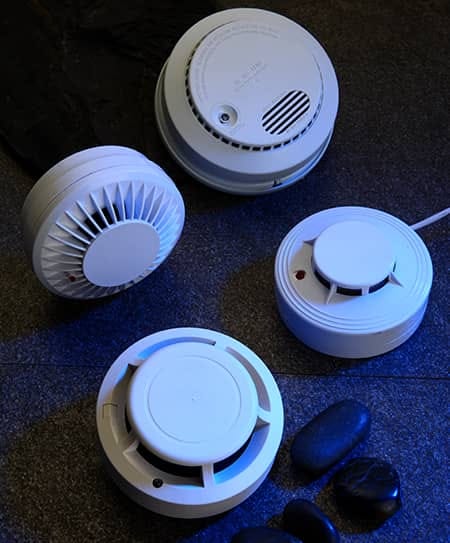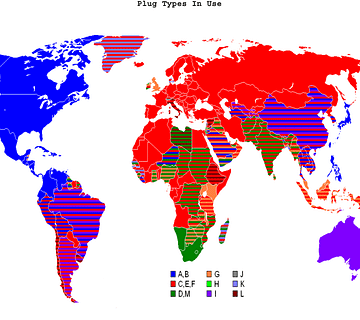Photoelectric Smoke Detectors vs. Ionization Smoke Detectors
The fundamental distinction between photoelectric and ionization smoke detectors lies in their respective fire detection mechanisms. Ionization detectors employ a minute quantity of radioactive material to generate a current between two electrodes within the sensor. Smoke particles that enter the sensor disrupt this current. When the electrodes detect a drop in the current, the alarm is triggered, prompting an alert sounding.
It is important to note that both smoke detectors are designed to detect different types of fires. Photoelectric smoke detectors are particularly effective at sensing slow, smoldering fires that produce more visible smoke, such as those caused by overheated wiring or smoldering upholstery. On the other hand, ionization smoke detectors are more sensitive to fast, flaming fires that produce smaller smoke particles, such as those resulting from burning paper or flammable liquids.
Ionization smoke detectors use a small quantity of radioactive material positioned between two electrically charged plates. This arrangement ionizes the air, enabling a current to pass between the plates. When smoke enters the chamber, it disrupts the flow of ions, reducing the current—this decrease in current triggers the alarm. Ionization smoke detectors respond faster than photoelectric smoke detectors to smoke from a flaming fire. Still, they will only activate when the fire produces enough smoke to reach the alarm’s vicinity.
While not yet widely prevalent, photoelectric smoke detectors have specific advantages and are suitable for various scenarios. They excel at detecting fires characterized by minimal flame production, such as smouldering fires caused by cigarette butts or candles. As smoke inhalation is a primary cause of fire-related fatalities, photoelectric detectors can identify these fires before visible flames emerge, offering an early warning system for enhanced safety.
In contrast, ionization detectors are more effective at detecting fires characterized by significant flames producing less smoke than smouldering fires. They are beneficial for fires involving wood, paper, or flammable liquids. By providing an early warning, ionization detectors offer additional time to respond and evacuate during high-flame fire incidents.
Benefits of Photoelectric Smoke Detectors
Below are some of the main benefits of choosing a photoelectric smoke detector.
Wider Range of Detection
Photoelectric smoke detectors are an excellent choice for homes because they accurately detect a broader range of fires. Many fires in residential settings originate as smoldering ashes, which ionization detectors often fail to detect due to the low heat involved. Photoelectric sensors outperform in detecting these lingering fires that can escalate into large, destructive flames over time. Therefore, experts commonly recommend using photoelectric smoke detectors for residential fire safety.
Fewer False Alarms
Ionization smoke detectors are prone to false alarms triggered by various non-fire sources, including cooking activities and steam generated in the bathroom. Any increase in heat has the potential to activate the alarm. In contrast, false alarms in photoelectric smoke detectors are relatively infrequent since the scattering of smoke particles is required to interrupt the light beam and trigger the alarm.
No Radioactive Material
Ionization smoke detectors incorporate a minute quantity of radioactive material, typically americium-241. The radiation emitted by this material is at a level that poses no significant risk to human health. Nevertheless, photoelectric detectors serve as a suitable alternative for homeowners seeking to minimize radiation exposure.

Ionization smoke alarms are generally more responsive to flaming fires.
How they work: Ionization-type smoke alarms consist of two electrically charged plates with a small amount of radioactive material in between. This setup causes the air to become ionized and allows current to pass between the plates. When smoke enters the alarm chamber, it disrupts the ion flow, leading to a decrease in current. This drop in current triggers the alarm to sound, alerting occupants of potential smoke or fire.
When choosing between a photoelectric smoke detector and an ionization smoke detector, several factors can guide your decision:
Fire Detection Needs: Consider the types of fires commonly encountered in the area where the detector will be installed. Photoelectric detectors are more effective at detecting smoldering fires with visible smoke, such as those caused by overheated wiring or smoldering upholstery. Ionization detectors are better suited for detecting fast-flaming fires that produce smaller smoke particles, such as those resulting from burning paper or flammable liquids.
Sensitivity to False Alarms: If you want to minimize false alarms triggered by non-fire sources like cooking or steam, photoelectric detectors are generally less prone to such false alarms compared to ionization detectors.
Combination Detectors: There are also combination smoke detectors available that incorporate both photoelectric and ionization technologies. These detectors provide a broader range of fire detection capabilities and may be suitable if you want comprehensive coverage.
Legal Requirements and Recommendations: Check local regulations, building codes, and fire safety recommendations in your area. Depending on the jurisdiction, there may be specific requirements or recommendations regarding the type of smoke detectors to be installed.
Personal Preferences: Consider your personal preferences and any specific concerns you may have, such as radiation exposure. If you are particularly concerned about radiation, photoelectric detectors can be a suitable option as they do not incorporate radioactive materials.
It is important to note that both smoke detectors have strengths and limitations. For optimal safety, you may also consider installing multiple detectors of different types in different areas of your home or premises to ensure comprehensive fire detection coverage.











No comment